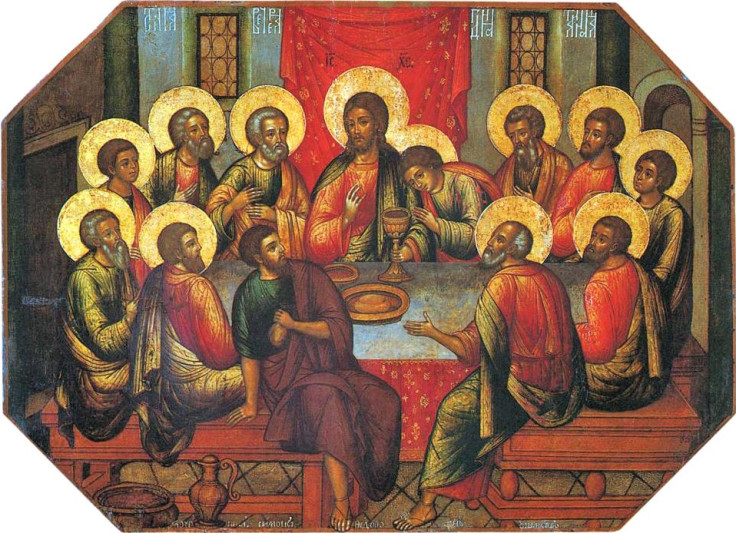Holy Thursday 2015: Facts, History And The Meaning Of These 5 ‘Maundy’ Traditions

Holy Thursday, also known as Maundy Thursday, is an annual Christian holiday celebrated three days before Easter Sunday and coinciding with the Last Supper, Jesus’ final meal with the apostles before his crucifixion as described in the biblical Gospels. Churches around the world hold special services to commemorate the supper and Jesus’ inauguration of the New Covenant which, in Christian theology, meant a break from Old Testament laws that required God’s people to perform sacrifices and rituals to please him.
Pope Francis announced he would spend Holy Thursday at the Rebiba prison in Rome washing inmates’ feet, the third time Francis has chosen to spend the holiday performing the symbolic gesture found in the hospitality customs of ancient Middle East societies.
The word "Maundy" comes from the Latin word for “command” and is a reference to Jesus’ words in the book of John, in which he told his disciples, “A new command I give you: Love one another. As I have loved you, so you must love one another.” Here are the meanings behind these five Maundy Thursday traditions.
1. Thursday night church services. Maundy services are traditionally solemn observances, unlike Easter Sunday, which tends to be celebratory. The services are typically held in the evening, as the Last Supper was said to take place at sundown.
2. The Eucharist. The Eucharist is a Christian rite meant to symbolize the Last Supper. It involves eating bread and drinking wine, which symbolize the body and blood of Jesus, respectively.
3. Feet washing. The religious rite of washing feet was described in the Bible as a symbolic gesture of breaking social barriers between the religious elite and the poor. "If I then, your Lord and Teacher, have washed your feet, you also ought to wash one another’s feet,” Jesus told his disciples as recounted in the book of John. “For I have given you an example, that you should do as I have done to you.”
4. Visiting seven churches. The tradition of visiting seven churches on Maundy Thursday to pray is practiced most notably in the Philippines and Latin America. The practice is thought to have originated in ancient Rome when religious followers visited Rome’s seven basilicas.
5. Alms giving. In the U.K., the giving of "alms," which comes from the Greek word for pity, is traditionally practiced by the monarch and involves offering coins to the elderly.
© Copyright IBTimes 2025. All rights reserved.






















